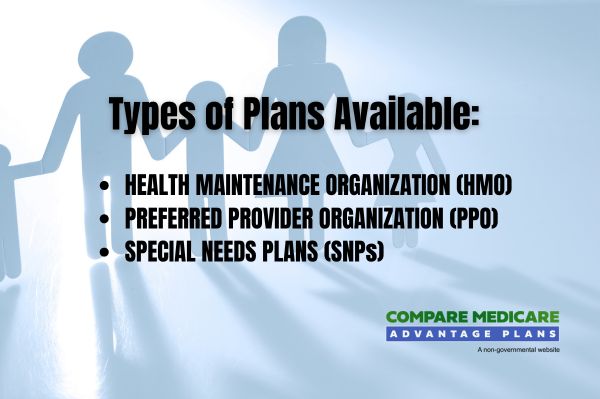Simply Healthcare Medicare Advantage Plans 2026
Curious about the potential Simply Healthcare Medicare Advantage Plans for 2026? This article will explore the comprehensive coverage, combining hospital, medical, and sometimes prescription drug benefits. This article will detail the Simply Healthcare Medicare Advantage Plans available in 2026 and help you understand their benefits and options.
Key Takeaways
- Simply Healthcare Medicare Advantage Plans could potentially provide a comprehensive alternative to Original Medicare, incorporating hospital, medical, and sometimes additional services like dental and vision care.
- The plans offer different types, including HMO, PPO, and SNP options, catering to diverse healthcare needs with varying levels of flexibility and coverage.
- Enrollment in these plans occurs during specific periods, including the Initial Enrollment Period and Annual Enrollment Period, ensuring beneficiaries can select the best plan for their needs.
Compare Plans in One Step!
Enter Zip Code
Understanding Simply Healthcare Medicare Advantage Plans 2026

Simply Healthcare Medicare Advantage Plans will likely be designed to offer an all-in-one alternative to Original Medicare. These plans, also known as Medicare Part C, combine the benefits of Medicare Part A (hospital insurance) and Part B (medical insurance), and occasionally include additional services such as prescription drug coverage, dental, vision, and hearing care. This potential integration may help to create a more comprehensive and streamlined healthcare coverage compared to Original Medicare.
A wide network of healthcare providers and a focus on accessibility could potentially ensure you receive the assistance needed to manage your health effectively at various healthcare web centers.
Available Plan Types
Simply Healthcare offers a variety of Medicare Advantage Plans to cater to different healthcare needs and preferences. These plans fall into three main categories: Health Maintenance Organization (HMO) plans, Preferred Provider Organization (PPO) plans, and Special Needs Plans (SNPs).
Each type of plan has unique features and benefits, so understanding your options is crucial to choosing the plan that suits your needs.
HMO Plans
HMO plans have been a popular choice for many Medicare beneficiaries due to their cost-effectiveness and coordinated care approach. These plans typically require members to select a primary care physician (PCP) who manages their healthcare, including prior authorization, and provides referrals for specialist services.
This structure likely ensures care is well-coordinated, allowing members to receive appropriate care at the right time.
PPO Plans
PPO plans offer greater flexibility compared to HMO plans, allowing members to see any healthcare provider without needing a referral. This flexibility could be particularly beneficial for individuals who prefer to have more control over their healthcare choices.
While PPO plans often come with higher premiums compared to HMO options, some plans may also provide reduced out-of-pocket expenses when using in-network providers. This balance of flexibility and cost-effectiveness might make PPO plans an attractive option for those who want comprehensive coverage without the restrictions of a primary care physician referral system.
Special Needs Plans (SNPs)
Special Needs Plans (SNPs) cater to individuals with chronic conditions, dual eligibility, or institutional care needs. They provide targeted care and support for those needing specialized medical attention. There are three main types of SNPs: Chronic Condition SNPs (C-SNPs), Dual Eligible SNPs (D-SNPs), and Institutional SNPs (I-SNPs).
One of the potential advantages of SNPs might be their coverage of Part D prescription drugs, possibly ensuring that enrollees could have access to necessary medications. This comprehensive approach to care likely helps manage the unique health challenges faced by individuals enrolled in SNPs, providing them with the resources and support they need to maintain their health and well-being.
Overview of Simply Healthcare Medicare Advantage 2026
Simply Healthcare Medicare Advantage Plans could potentially offer a robust and comprehensive alternative to Original Medicare. These plans combine hospital, medical, and sometimes prescription drug coverage into a single plan, simplifying the healthcare experience for beneficiaries. Some plans may also incorporate additional benefits such as dental, vision, and hearing services, to help address the full spectrum of healthcare needs.
One of the potential advantages of Simply Healthcare Medicare Advantage Plans may be their extensive network of healthcare providers. This network likely ensures that members have access to a wide range of healthcare professionals and facilities, making it easier to receive the care they need.
Covered Services and Potential Benefits
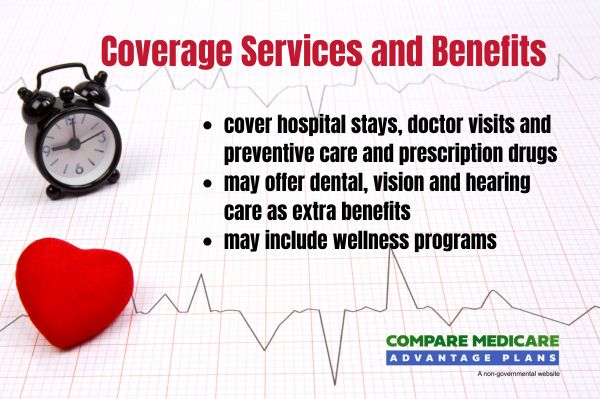
Some plans may offer a wide range of covered services and benefits that could go beyond what Original Medicare provides. While these plans typically include coverage for hospital stays, doctor visits, preventive care, and sometimes prescription drugs, certain plans may also offer additional benefits such as dental, vision, and hearing care, which are not covered by Original Medicare.
Possible Benefits of Simply Healthcare Medicare Advantage Plans
Some plans may offer several additional benefits, such as dental, vision, and hearing care, possibly making them an attractive option for many Medicare beneficiaries. These potential benefits could significantly enhance the overall value of the plans and possibly provide comprehensive coverage for a wide range of healthcare needs.
Additionally, certain plans may also include prescription drug coverage, which could potentially reduce the overall cost of medications for members.
Enrollment Process for Simply Healthcare Medicare Advantage Plans
Enrollment involves evaluating eligibility and choosing the plan that best fits your needs. The process is designed to be straightforward, ensuring that beneficiaries can easily navigate their options and complete their compliance enrollment.
Knowing the specific enrollment periods is crucial for timely and successful enrollment.
When to Enroll
Enrollment in Medicare Advantage Plans can occur during specific periods throughout the year. The Initial Enrollment Period (IEP) spans three months before and after you qualify for Medicare. This period ensures new beneficiaries have coverage as soon as they become eligible.
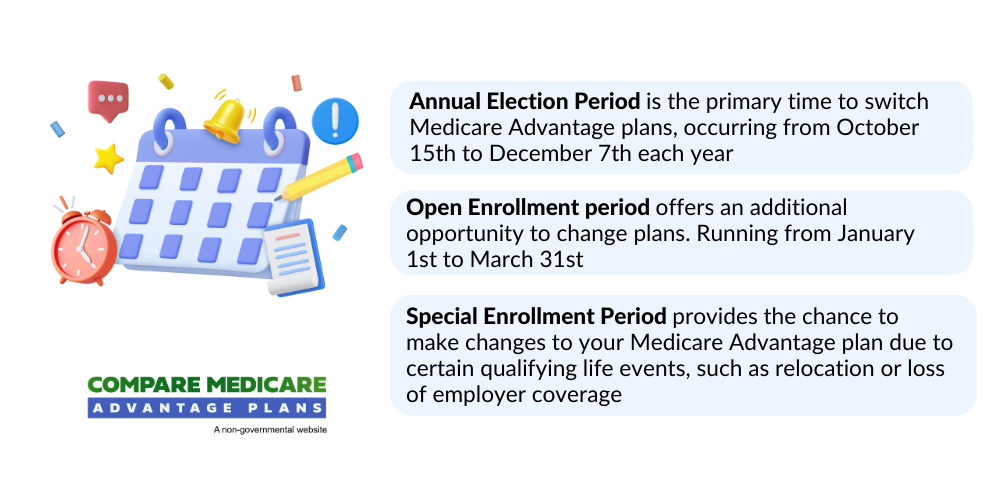
The Annual Enrollment Period (AEP) runs from October 15 to December 7, allowing beneficiaries to switch plans or adjust their coverage.
Additionally, the Medicare Advantage Open Enrollment Period (OEP) from January 1 to March 31 provides another opportunity for those already enrolled in a plan to make changes.
Special Enrollment Periods (SEPs) provide flexibility for enrollment due to life events like moving or losing coverage.
Individuals can enroll by using this website or by calling one of our licensed agents at 1-833-641-4938 (TTY 711), Mon-Fri 8 am-9 pm EST.
Different Enrollment Periods
The Initial Enrollment Period (IEP) lasts seven months, starting three months before turning 65 and ending three months after eligibility. It’s essential for new Medicare beneficiaries to secure coverage without any gaps.
The Annual Enrollment Period (AEP) from October 15 to December 7 allows beneficiaries to switch plans or adjust their coverage options, while the Medicare Advantage Open Enrollment Period (OEP) from January 1 to March 31 permits those already enrolled in a plan to switch to another Medicare Advantage Plan or revert to Original Medicare.
Special Enrollment Periods (SEPs) offer flexibility for changes due to specific life events like moving or losing health coverage.
OEP, AEP, Special Enrollment
The Open Enrollment Period (OEP) for Medicare Advantage runs from January 1 to March 31, allowing beneficiaries to switch plans or revert to Original Medicare. This period is particularly useful for those who may find their current plan no longer meets their needs or who want to explore better options.
The Annual Enrollment Period (AEP) occurs from October 15 to December 7, during which individuals can enroll in, switch, or drop their Medicare Advantage Plans.
Special Enrollment Periods (SEPs) offer additional opportunities to make changes due to specific life events, providing a safety net for those who need to adjust their coverage outside the regular enrollment periods.
Potential Costs Associated with Simply Healthcare Medicare Advantage Plans
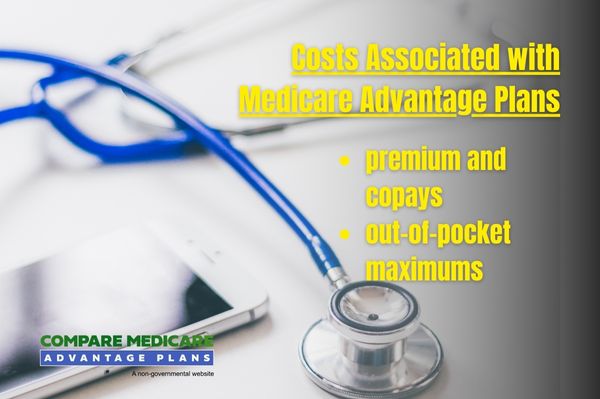
These plans will likely come with various costs, including premiums, co-pays, and out-of-pocket maximums. These costs may vary based on the specific plan and available coverage.
Understanding these costs could help beneficiaries make informed decisions about their healthcare coverage.
Premiums and Co-Pays
Monthly premiums may vary significantly based on the plan’s coverage and benefits. Some plans might offer lower premiums, possibly making them attractive for those looking to minimize monthly expenses. Co-pays for services like primary care visits and specialist consultations may also vary depending on the plan specifics.
Beneficiaries should consider these costs when evaluating their options. Balancing the potential premiums and co-pays could help ensure they choose a plan that fits their budget while providing necessary coverage.
Out-of-Pocket Maximums
Some Medicare Advantage plans might incorporate a maximum out-of-pocket limit, which could help protect members from excessive costs in a given year. Certain plans may offer an out-of-pocket maximum, possibly limiting the total amount members pay for covered services in a year and providing financial protection against high medical expenses.
However, premiums likely won’t be included in this maximum, and beneficiaries will still need to pay these costs regardless of spending on other services.
How to Qualify for Simply Healthcare Medicare Advantage Plans
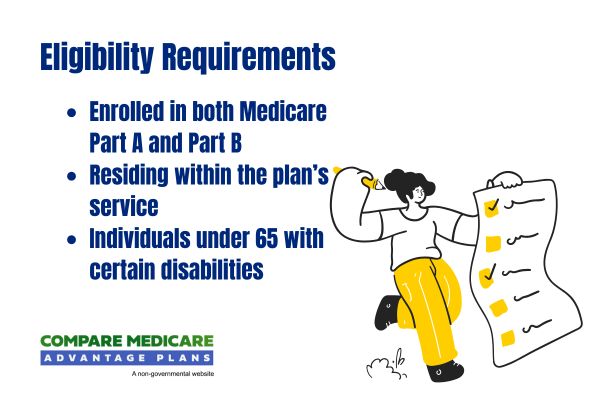
Eligibility for Simply Healthcare Medicare Advantage Plans generally requires being 65 years or older or having a qualifying disability. You must also reside in the plan’s service area and cannot have end-stage renal disease (ESRD) unless certain conditions apply.
Contracted Network and Access to Care
These plans likely rely on an extensive network of healthcare providers to deliver necessary care to members. The network must be sufficient to meet care needs, ensuring members could have access to required definitions without significant delays. It must also align with local care patterns, allowing beneficiaries to receive care in their communities.
Comparing Simply Healthcare Medicare Advantage Plans 2026 to Original Medicare
Some Simply Healthcare Medicare Advantage Plans may provide several advantages over Original Medicare, such as potentially incorporating additional benefits like dental, vision, and hearing services.
Knowing these differences could help beneficiaries make informed decisions about their healthcare coverage.
Coverage Differences
One of the main differences may be the inclusion of prescription drug coverage into certain Medicare Advantage plans. Medicare Advantage plans typically require using network providers for non-emergency care, whereas Original Medicare allows visits to any provider accepting Medicare.
Some Medicare Advantage plans may also include extra benefits like dental exams and vision care, not covered by Original Medicare. Another potential difference is that certain Medicare Advantage plans might have an annual limit on out-of-pocket costs, unlike Original Medicare, which lacks such a limit.
Cost Comparisons
Some Medicare Advantage plans may be more cost-effective than Original Medicare. Certain plans may offer lower monthly premiums, likely making them an affordable alternative. Extra benefits like dental, vision, and hearing services may also reduce the need for supplementary coverage, potentially lowering overall costs.
Certain Medicare Advantage plans may also integrate a cap on out-of-pocket expenses, unlike traditional Medicare, possibly providing greater financial protection against high medical costs.
Emergencies and Referrals

In emergencies, these plans ensure members can access out-of-network healthcare providers, providing flexibility and peace of mind. This flexibility is crucial for addressing urgent healthcare needs without worrying about network restrictions.
Simply Healthcare enforces standards for appointment waiting times, ensuring timely access to care. For non-life-threatening emergencies, care should be accessible within six hours, while urgent care must be provided within 24 hours.
After-hours care protocols mandate that calls must be returned within 30 minutes, ensuring continuous access to healthcare providers.
Summary
Simply Healthcare Medicare Advantage Plans could offer a comprehensive and flexible alternative to Original Medicare, likely providing a wide range of additional benefits and services. These plans will likely be designed to meet the diverse healthcare needs of beneficiaries, from routine care to specialized medical attention. With options like HMO, PPO, and SNPs, Simply Healthcare could potentially ensure that every individual can find a plan that suits their unique requirements.
By focusing on preventive care, affordability, and a robust network of providers, Simply Healthcare Medicare Advantage Plans likely aim to enhance the overall health and well-being of their members. Whether you’re new to Medicare or considering a switch from Original Medicare, these plans could present a valuable option for comprehensive healthcare coverage.
Frequently Asked Questions
→ What types of Simply Healthcare Medicare Advantage Plans are available?
Simply Healthcare offers HMO plans, PPO plans, and Special Needs Plans (SNPs) to help accommodate varying healthcare needs and preferences. These plan options ensure you can find one that fits your situation best
→ What additional benefits could Simply Healthcare Medicare Advantage Plans provide?
Some Simply Healthcare Medicare Advantage Plans may provide additional benefits such as dental, vision, and hearing services that are not covered by Original Medicare. This could potentially enhance overall healthcare coverage and likely supports better health management for members.
→ When can I enroll in a Simply Healthcare Medicare Advantage Plan?
You can enroll in a Simply Healthcare Medicare Advantage Plan during the Initial Enrollment Period, the Annual Enrollment Period, or during Special Enrollment Periods specific to your situation. Be sure to check the exact dates for these enrollment windows to ensure you don’t miss out.
→ How are the costs structured for Simply Healthcare Medicare Advantage Plans 2026?
Certain Simply Healthcare Medicare Advantage Plans might include premiums, co-pays, and out-of-pocket maximums, which may vary depending on the specific plan chosen. It’s essential to review each plan’s details to understand the associated costs fully.
→ What should I do in an emergency if I’m enrolled in a Simply Healthcare Medicare Advantage Plan?
In an emergency, you can obtain care from out-of-network providers under your Simply Healthcare Medicare Advantage Plan, allowing you to focus on your health without network limitations. Seek immediate medical attention as needed.

ZRN Health & Financial Services, LLC, a Texas limited liability company


